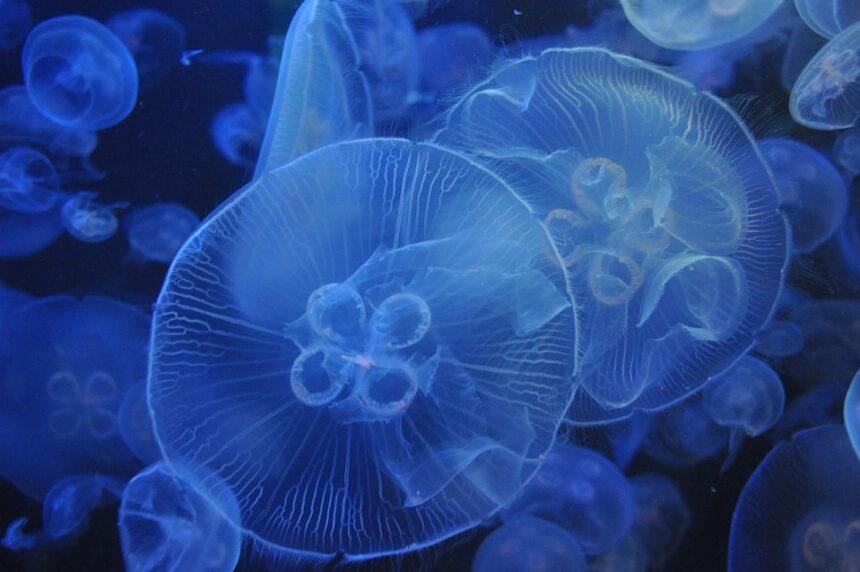Introduction
Imagine a world beneath the waves where vibrant colors and fascinating behaviors coexist. Welcome to the realm of Peiscans! These mesmerizing marine creatures play an integral role in our oceans. In this blog post, we’ll uncover ten captivating facts that will not only educate but also inspire curiosity and admiration for these underwater wonders. Whether you’re an aquarium enthusiast or a marine biologist, there’s something here for everyone.
The Diversity of Peiscans
Peiscans are a marvel of biodiversity. With thousands of species ranging from the flamboyant to the masters of camouflage, these fish exhibit a range of unique adaptations. For example, some Peiscans can change color to blend with their surroundings, while others have evolved intricate fin structures to deter predators. This diversity is not just fascinating but also crucial for the health of marine ecosystems.
The variety of species also means a wide array of habitats and behaviors. Some Peiscans prefer the shallow coastal areas, while others thrive in the mysterious depths of the ocean. Each species has its own set of survival strategies, making them an endlessly intriguing subject for study and observation.
In aquariums, the diversity of Peiscans can be showcased to educate the public about marine life. From the vibrantly colored Peiscans that catch the eye to the more subtle species that require a keen eye to spot, there’s always something new to learn and appreciate.
Peiscans Around the World
Peiscans inhabit oceans all over the globe, from the warm waters of the Caribbean to the icy depths of the Arctic. Each region offers a unique habitat that influences the behavior and appearance of its resident Peiscans. For instance, tropical Peiscans often display bright, vivid colors as a form of communication and mating display, whereas those in colder regions might rely more on camouflage.
The Coral Triangle, located in the Western Pacific, is home to the highest diversity of Peiscans. This biodiversity hotspot is a treasure trove for marine biologists and aquarium enthusiasts alike. The Peiscans found here exhibit a wide range of behaviors and adaptations, making it a key area for research and conservation.
In contrast, the Peiscans of the deep ocean are adapted to life in extreme conditions. These species often have bioluminescent capabilities, producing light to attract prey or deter predators. Understanding these adaptations can provide insights into the resilience of life in one of the harshest environments on Earth.
The Life of a Peiscan
The life cycle of a Peiscan is as intricate as it is fascinating. Beginning life as larvae, Peiscans undergo several stages of development before reaching adulthood. During this time, they experience significant changes in size, shape, and behavior. This metamorphosis is crucial for their survival, allowing them to exploit different ecological niches at various life stages.
Feeding habits among Peiscans are equally diverse. Some are herbivores, grazing on algae and seagrass, while others are carnivorous predators. Their diet can influence not only their physical development but also their role within the ecosystem. For example, herbivorous Peiscans play a vital role in controlling algae growth on coral reefs, maintaining the health of these delicate environments.
Reproduction strategies among Peiscans are varied and complex. Some species engage in elaborate courtship rituals, while others might release eggs and sperm into the water column simultaneously, relying on external fertilization. These reproductive behaviors ensure the continuation of their species, even in the face of environmental challenges.
Threats to Peiscans
Despite their resilience, Peiscans face numerous threats. Habitat destruction, caused by activities such as coastal development and pollution, is one of the most pressing issues. Mangrove forests and coral reefs, which serve as crucial habitats for many Peiscan species, are particularly vulnerable. The loss of these habitats can lead to declines in Peiscan populations, disrupting the balance of marine ecosystems.
Overfishing is another significant threat. Many Peiscan species are targeted for their meat or for the aquarium trade. Unsustainable fishing practices can deplete populations faster than they can reproduce, leading to long-term declines. Efforts to regulate fishing and promote sustainable practices are essential to ensure the survival of these species.
Climate change adds another layer of complexity. Rising sea temperatures and ocean acidification can impact the health of coral reefs and other marine habitats, making it harder for Peiscans to find food and suitable breeding grounds. Addressing climate change is crucial for the long-term survival of these fascinating creatures.
Conservation Efforts
Fortunately, there are numerous initiatives aimed at protecting Peiscans and their habitats. Marine protected areas (MPAs) are one of the most effective tools for conservation. By restricting human activities in these areas, MPAs provide safe havens where Peiscan populations can thrive. These protected areas also serve as valuable research sites for scientists studying marine biodiversity.
Community-based conservation projects are also making a difference. Engaging local communities in conservation efforts ensures that those who depend on marine resources are actively involved in their protection. Programs that promote sustainable fishing practices, habitat restoration, and environmental education are essential for long-term success.
International collaborations are crucial for addressing the global nature of Peiscan conservation. Organizations like the International Union for Conservation of Nature (IUCN) work to coordinate efforts across borders, ensuring that conservation strategies are effective and comprehensive.
Fun Facts About Peiscans
Peiscans are full of surprises! Did you know that some Peiscans can live to be over 100 years old? This remarkable longevity is rare in the animal kingdom and speaks to the resilience of these fascinating creatures. Understanding the factors that contribute to their long lives can provide valuable insights into aging and longevity in other species.
Another fun fact is that Peiscans communicate using a variety of sounds. From clicks and whistles to grunts and growls, these vocalizations play a crucial role in social interactions and territory defense. Studying these sounds can help us understand the complex social structures of Peiscan communities.
Lastly, some Peiscans have developed mutualistic relationships with other marine organisms. For example, the cleaner wrasse Peiscan removes parasites from larger fish, benefiting both species. These symbiotic relationships highlight the interconnectedness of marine ecosystems and the importance of maintaining biodiversity.
Conclusion
Peiscans are more than just a fascinating subject for study—they are a vital component of marine ecosystems. From their diverse adaptations to their complex life cycles, these creatures captivate the imagination and inspire a deeper appreciation for the natural world. However, they face significant threats that require our attention and action.
By supporting conservation efforts and promoting sustainable practices, we can help ensure that Peiscans continue to thrive for generations to come. Share this post with fellow enthusiasts, and let’s work together to protect these incredible creatures.
Dive deeper into the world of Peiscans by signing up for our newsletter, where you’ll receive regular updates on conservation efforts, research findings, and more. Join our community of passionate marine enthusiasts and make a difference today!




